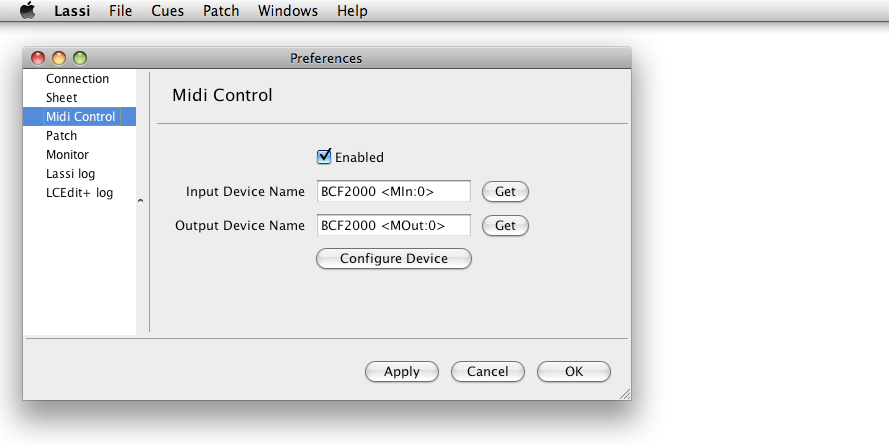Mac users
Lassi will run on any operating system which has support for Java 5 or higher. Although the application is the same whether it is running on Mac OS X, Windows or Linux, there are a few specifics when running on Mac OS X.Lassi Menu
On Mac OS X all Lassi menu options are part of the application menu, rather than attached to the individual windows. This is structure of the menu options:
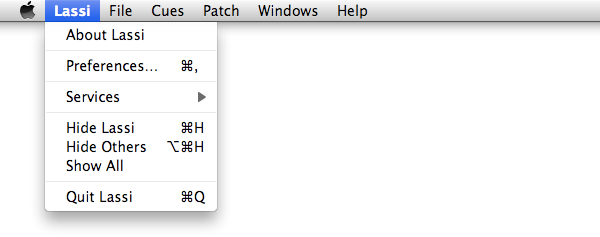

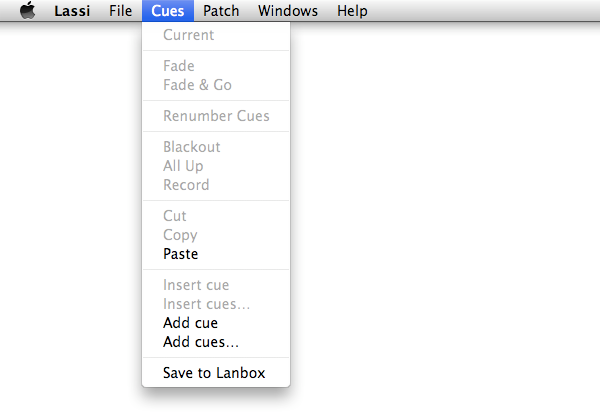

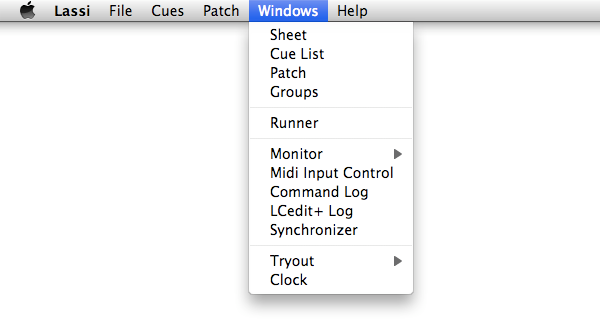
Midi connection
After connecting the USB cable, the BCF2000 device shows up in the "Audio Midi Setup" window on the Mac.
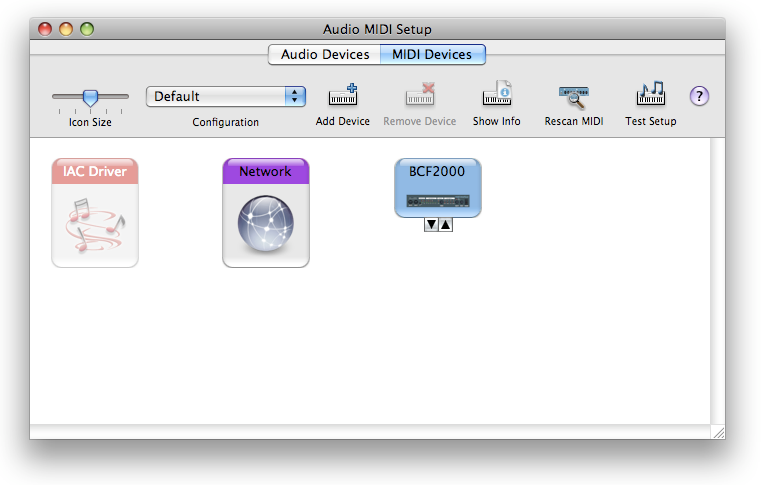
The detailed information dialog (select "Show Info") shows the BCF2000 input and output ports.

At this point you may need to install a small additional software. This is the case when the device does not get listed in the list of available MIDI input and output devices in Lassi (Lassi > Preferences...).
If you do not see the device in the list when clicking one of the "Get" buttons, this may mean that the Java environment on your Mac does not yet support external MIDI devices. You will need a so-called MIDI SPI (Service Provider Interface) to fill this gap.
The Mandolane MIDI SPI (not free, shareware trial version available) has proven to work ok with Lassi.
After downloading this software, drag the files libMandoMidiJNILib.jar and libMandoMidiJNILib.jnilib in its distribution to the folder /Library/Java/Extensions.
Now the BCF2000 shows up in the Lassi Midi Preferences window, and can be selected for controlling Lassi.
